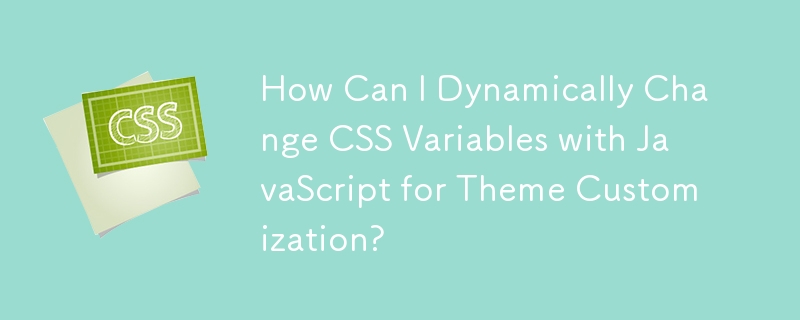Found a total of 10000 related content
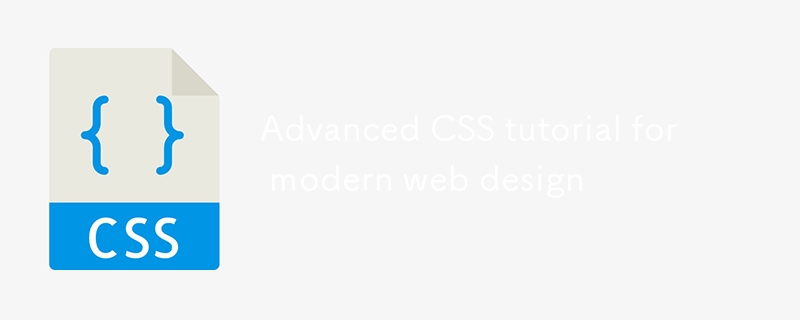
Advanced CSS tutorial for modern web design
Article Introduction:The key to mastering modern CSS design is layout, responsiveness, and maintainability. 1. Use CSSGrid and Flexbox to combine layout. Grid is suitable for two-dimensional structures such as the entire page, and Flexbox is suitable for one-dimensional arrangements such as button groups; 2. Use CSS variables to achieve theme switching, define color variables and dynamic switching with JavaScript; 3. Mobile priority and handle responsive details, adopt relative units, picture srcset attributes and centralized media queries; 4. Improve maintainability, use BEM and other naming specifications, split modules, control nesting levels, and separate components and layout styles. These combinations of techniques can significantly improve code quality.
2025-07-01
comment 0
940

How to implement a 'dark mode' toggle using HTML, CSS, and JS?
Article Introduction:How to add a dark mode toggle button to your website? First, use HTML to build the structure, then use CSS to define two theme styles, and finally implement the switching function through JavaScript. 1. Create a basic layout: Create an HTML file containing toggle buttons and content, and link CSS and JS files. 2. Define the theme in CSS: Use variables to set the color scheme of default and dark modes and apply it to page elements. 3. Add JavaScript switching logic: Switch the dark mode class on the body by clicking events, and save user preferences with localStorage.
2025-07-16
comment 0
252
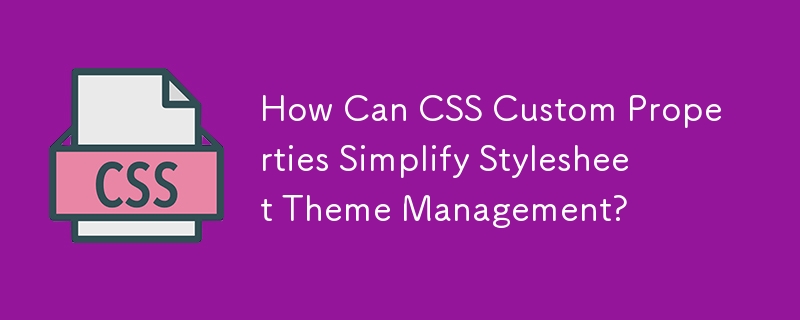
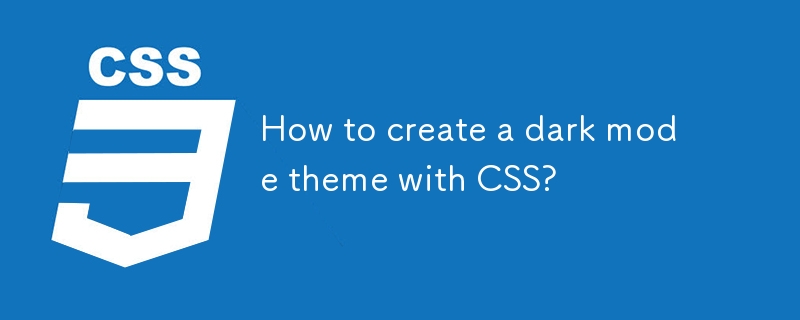
How to create a dark mode theme with CSS?
Article Introduction:The key to creating a dark mode theme is to use CSS media queries and variables to manage color schemes. 1. Use prefers-color-scheme media to query the automatic adaptation system settings. The code is as follows: @media(prefers-color-scheme:dark) to apply dark styles; 2. Use CSS variables to uniformly manage colors, and realize theme switching by defining: root and .dark-mode variables; 3. Provide user manual switching options, combine JavaScript to dynamically switch class names and save preferences with localStorage; 4. Pay attention to the adaptation issues of images, icons, links and other elements in dark backgrounds, and consider browser compatibility and transition animations
2025-07-20
comment 0
570

What are CSS Custom Properties (variables), and how do they improve maintainability and theming?
Article Introduction:CSS variables improve style maintenance and theme management by defining reusable values. Its core advantages include: 1. Reduce duplication and improve consistency by centrally defining style values; 2. Support dynamic coverage to achieve simple and efficient multi-theme switching; 3. Avoid common traps such as inconsistent naming, overuse, etc. Developers should define global variables in:root, and use scope and fallback values ??to enhance flexibility and readability, while dynamic adjustments are combined with JavaScript to improve user experience.
2025-06-19
comment 0
184
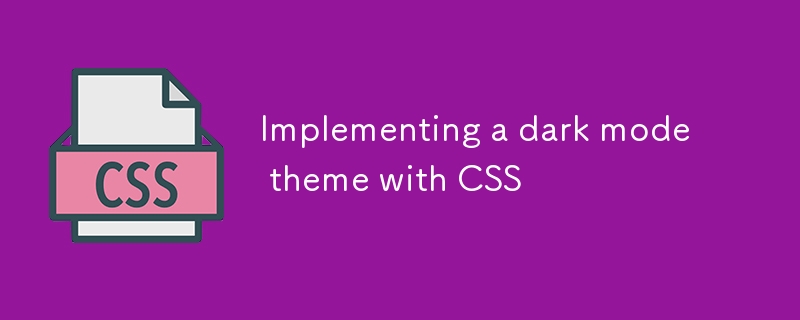
Implementing a dark mode theme with CSS
Article Introduction:The core of implementing dark mode is to use CSS variables to manage colors and cooperate with the theme switching mechanism. First, by defining CSS variables, the color value can be managed uniformly, so that the entire site can be effective if one modification is made; second, use class name switching to realize manual mode, and control the addition or removal of classes through JavaScript; third, automatically identify system preferences in combination with media queries; finally, the adaptation of pictures and third-party content needs to be handled, such as using filters to adjust brightness contrast to ensure overall visual coordination.
2025-07-11
comment 0
360

CSS Custom Properties (Variables) for Theme Management
Article Introduction:There are three reasons for using CSS variables for topic management: 1. Dynamic modification capabilities, 2. Support scope control, 3. Can be operated by JavaScript; it is more powerful than traditional preprocessor variables. When organizing the theme variable structure, it should be stored in categories according to module or purpose, such as color, font size, spacing, etc., and switch themes by class names, such as .theme-light and .theme-dark. It is recommended to combine JavaScript operation class names with dynamic switching themes, such as setting document.body.className, which can also directly set variables but are more suitable for personalized customization. Notes include: 1. Pay attention to the variable scope. You can define local variables in: root definition global variables or component containers.
2025-07-18
comment 0
838
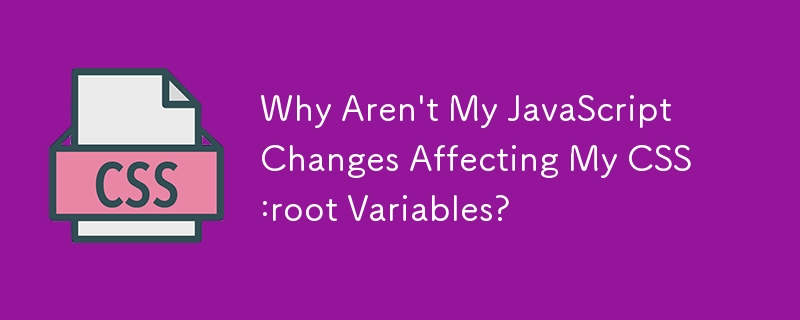
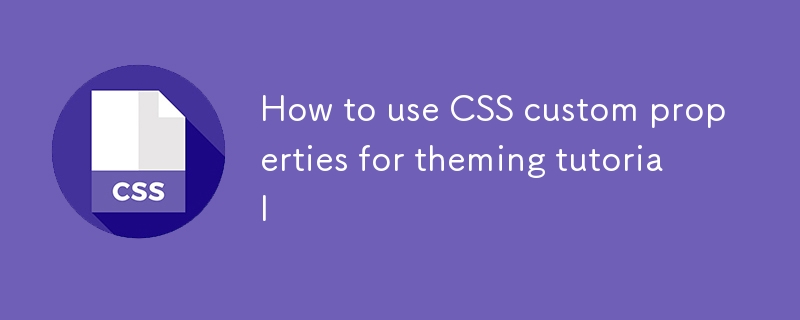
How to use CSS custom properties for theming tutorial
Article Introduction:CSS custom attributes are a flexible way to implement theme switching. They abstract colors, fonts and other styles for easy management and dynamic modification. Compared to traditional multi-CSS files or preprocessor variables, CSS variables support runtime changes, suitable for dark mode and user-defined themes. It is recommended to define default variables in :root, create classes such as .dark for different topics, and toggle class names through JS to achieve dynamic topic switching. At the same time, you can use localStorage to remember user selections. Pay attention to variable scope, fallback value, performance and compatibility issues in details.
2025-07-12
comment 0
567
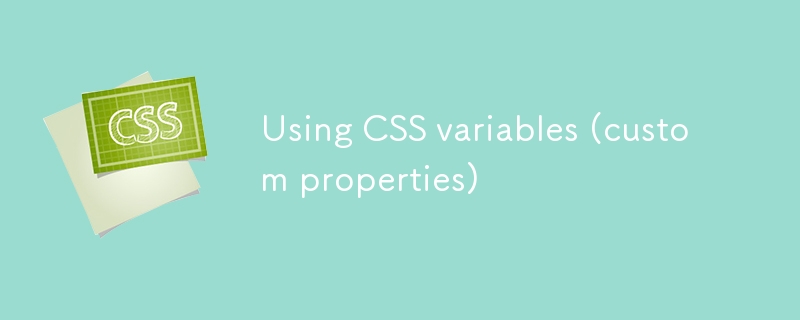
Using CSS variables (custom properties)
Article Introduction:CSS variables (custom attributes) are defined at the beginning, such as --main-color:#333;, which can be dynamically referenced and modified in CSS, suitable for topic switching and style management. 1. Defining variables are usually in: root or specific elements, such as: root{--main-color:#333;}; 2. When using var(--variable name), such as color:var(--main-color); 3. You can set the default value to prevent errors, such as var(--main-color,#000); Common uses include: 1. Unified management of theme colors, and style changes by switching variables; 2. Avoid duplicate code, and centrally manage color, spacing and other values; 3. Dynamic
2025-07-10
comment 0
957

Implementing Dark Mode in Modern H5 Web Applications
Article Introduction:To realize the dark mode of H5 web application, 1. Use CSS variables to manage the theme, define the light and dark color variables and switch dynamically; 2. judge the user's system preferences, and use prefers-color-scheme to automatically adapt and store user selections; 3. Provide manual switching buttons to allow users to customize the theme and persist the settings; 4. Pay attention to the performance of pictures and icons, use masks, filters or prepare dark icon resources to maintain the overall visual effect.
2025-07-19
comment 0
485

How to use custom CSS properties variables
Article Introduction:CSS custom attributes (variables) can improve style management efficiency through definition, use and dynamic control. 1. Definition variables are recommended to be declared globally in: root, or locally defined in class or element. It is recommended to name a unified prefix. 2. Use the var() function to call variables, which are only used for attribute values, and support fallback default values. 3. Use JS modification to change the volume to realize the theme switching and other functions, or use class to control the style. 4. It is actually used in theme management, responsive design and component development to improve maintainability and collaboration efficiency.
2025-07-07
comment 0
529
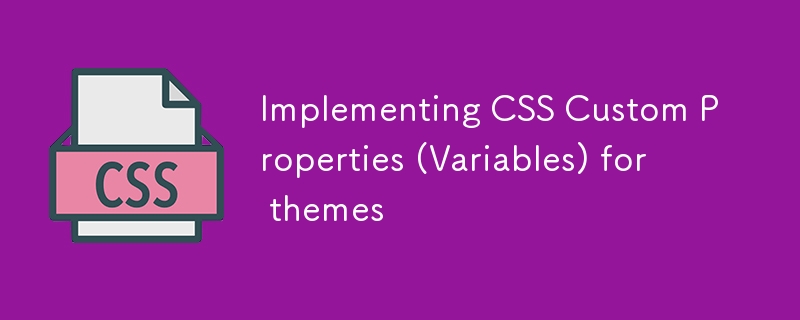
Implementing CSS Custom Properties (Variables) for themes
Article Introduction:CSS custom attributes improve the flexibility and maintainability of the theme system through variable forms. It starts with --, such as --primary-color, and calls through var(), supports global and local definitions, and can be dynamically modified through JavaScript. When implementing, the default theme is usually defined in:root, other theme styles are defined in the class, and topic changes are implemented by switching the class name. It is recommended to use the setTheme function to modify the body class name and combine it with local storage to remember user preferences. Notes include: compatibility issues, coverage of variable scope affecting values, increasing debugging difficulty, and avoiding excessive abstraction. The rational use of CSS variables can effectively simplify topic management, and at the same time, pay attention to details that are easily overlooked.
2025-07-07
comment 0
938

How to use CSS variables with HTML5?
Article Introduction:CSS variables effectively manage styles by defining, using, dynamically updating and processing fallbacks. First, use -- to define variables in:root or specific elements, such as --primary-color:#007bff; then call them through the var() function in the style, such as background-color:var(--primary-color); then dynamically modify and change the value of the variables to achieve theme switching and other effects; finally, provide alternate styles for old browsers to ensure compatibility, such as setting background-color:#007bff as fallback.
2025-07-14
comment 0
450
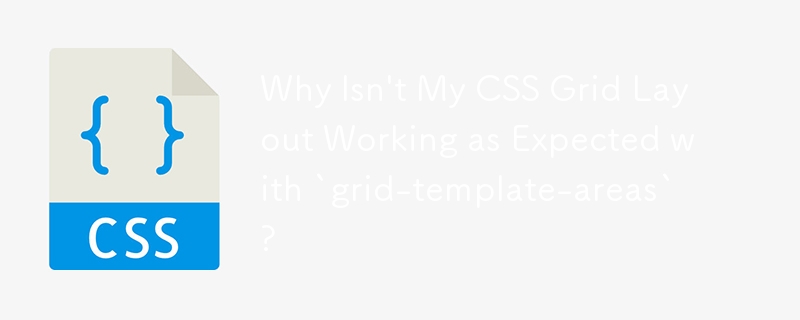
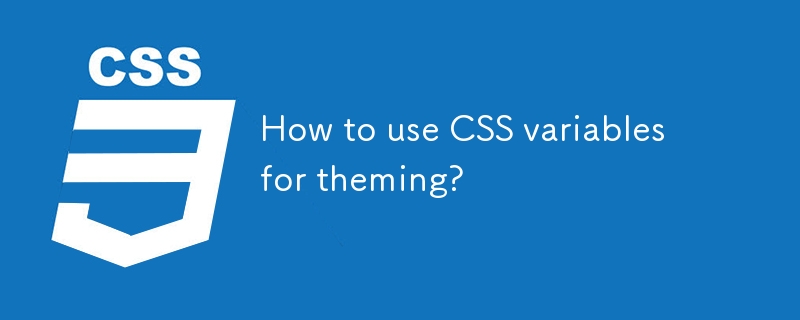
How to use CSS variables for theming?
Article Introduction:The core of using CSS variables to achieve topic switching is to define the basic variables and organize the topic structure, and dynamically switch through class names or attributes. The steps are as follows: 1. Define basic variables such as colors, fonts, etc. in root; 2. Create classes that cover variables for different themes (such as dark and light colors); 3. Call variables using var() in CSS rules; 4. Switch class names or attributes through JavaScript to achieve theme changes; 5. Extend variables to font size, rounded corners, shadows and other style attributes. This clear structure and easy maintenance lies in reasonable naming and scope control.
2025-07-15
comment 0
677

Implementing Dark Mode with CSS Variables and JavaScript
Article Introduction:The key to implementing dark mode lies in the coordination of CSS variables and JavaScript, which is divided into three steps. The first step is to use CSS variables to define the bright and dark theme styles, and concentrate the color values in the:root and .dark classes for subsequent maintenance; the second step is to add a toggle button and control the class name switching through JavaScript, and store user preferences in localStorage; the third step is to detect system preferences or user history selections when the page is loaded, and automatically apply the corresponding mode. In this way, a flexible and user-friendly dark mode switching experience can be achieved.
2025-07-19
comment 0
928

Utilizing CSS Custom Properties for Dynamic Styling
Article Introduction:CSS custom properties are a key tool for implementing dynamic styles. 1. Custom attributes start with --, such as --main-color, defined in:root and called through var() to improve code maintainability; 2. Dynamic changes in theme colors are achieved through class name switching, combining JavaScript and local storage to support user preferences; 3. CSS variables can be modified in real time through JavaScript, which is suitable for color selectors, A/B testing and other scenarios; 4. Pay attention to avoiding nested use of var(), which is incompatible with IE, and the downgrade solution needs to be handled reasonably.
2025-07-06
comment 0
946

Bootstrap with Sass: Advanced Styling & Theming Techniques
Article Introduction:Combining Bootstrap and Sass can achieve more advanced styles and theme customization: 1. Modify Bootstrap variables to change theme colors; 2. Simplify CSS writing with Sass nested rules; 3. Use Sass' mixing and functions to create complex styles, such as buttons of different colors; 4. Pay attention to the compilation and import order of Sass files to avoid common errors; 5. Optimize performance and maintain code through the rational use of Sass functions and tools.
2025-03-31
comment 0
333
